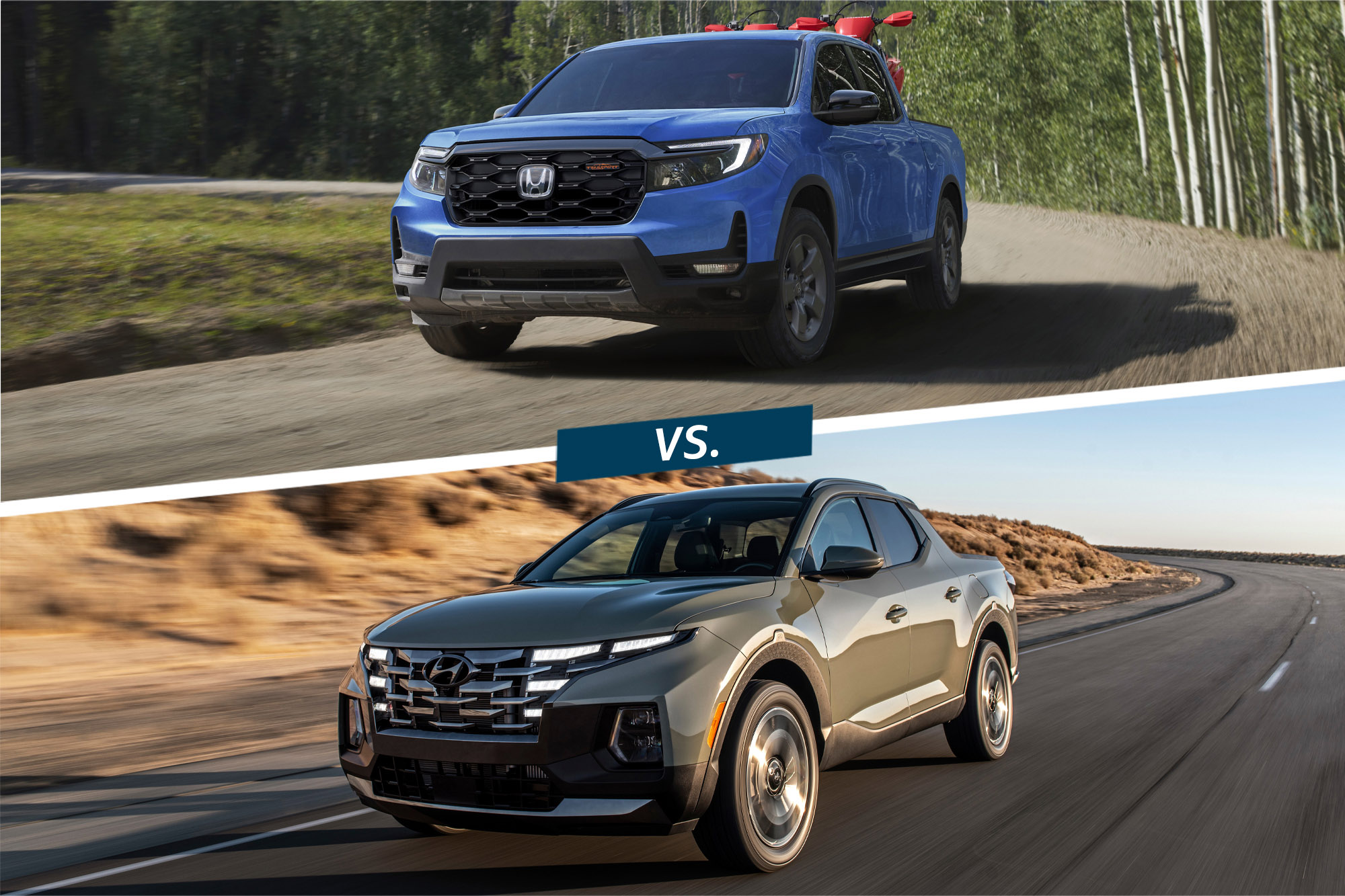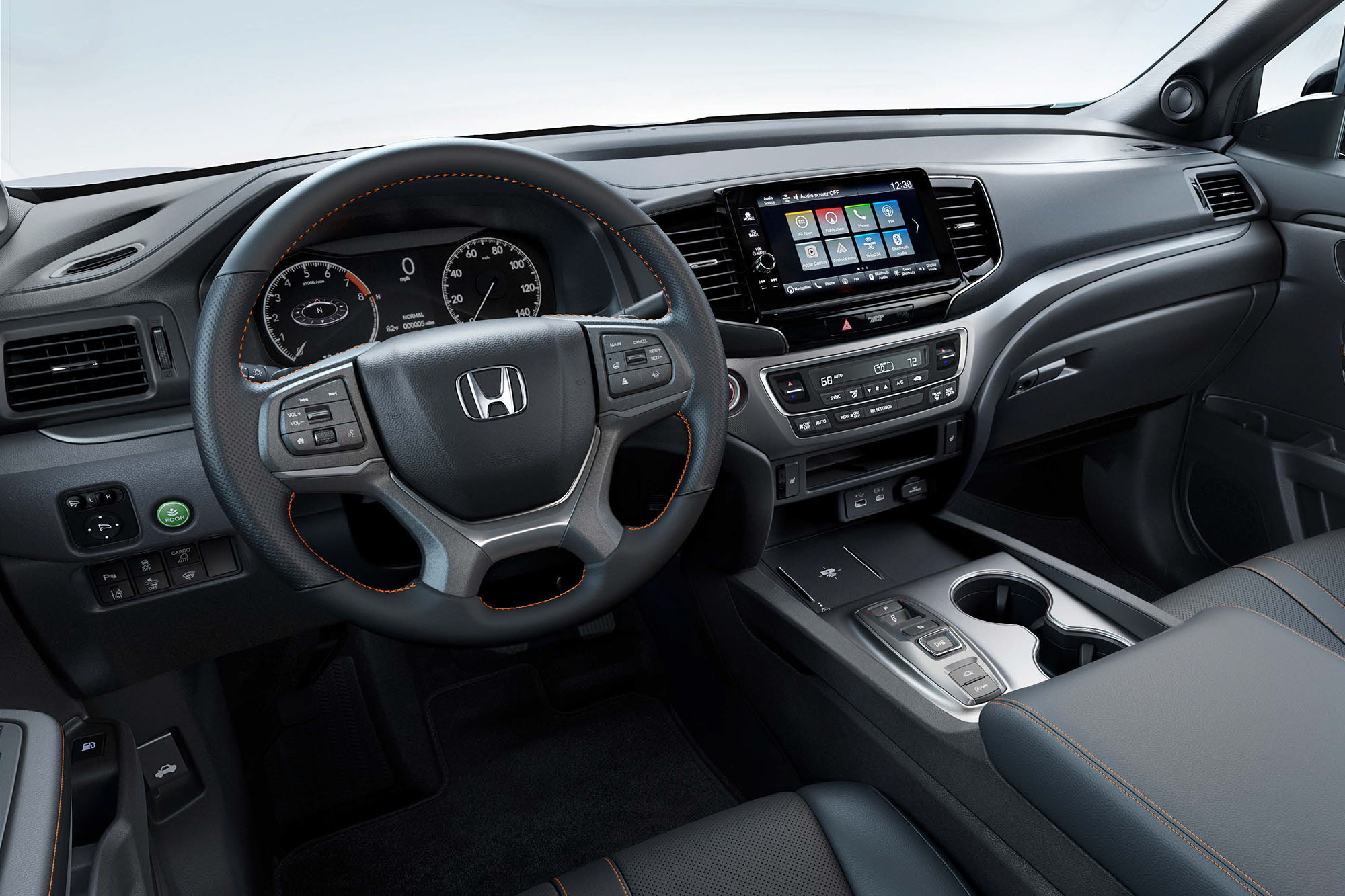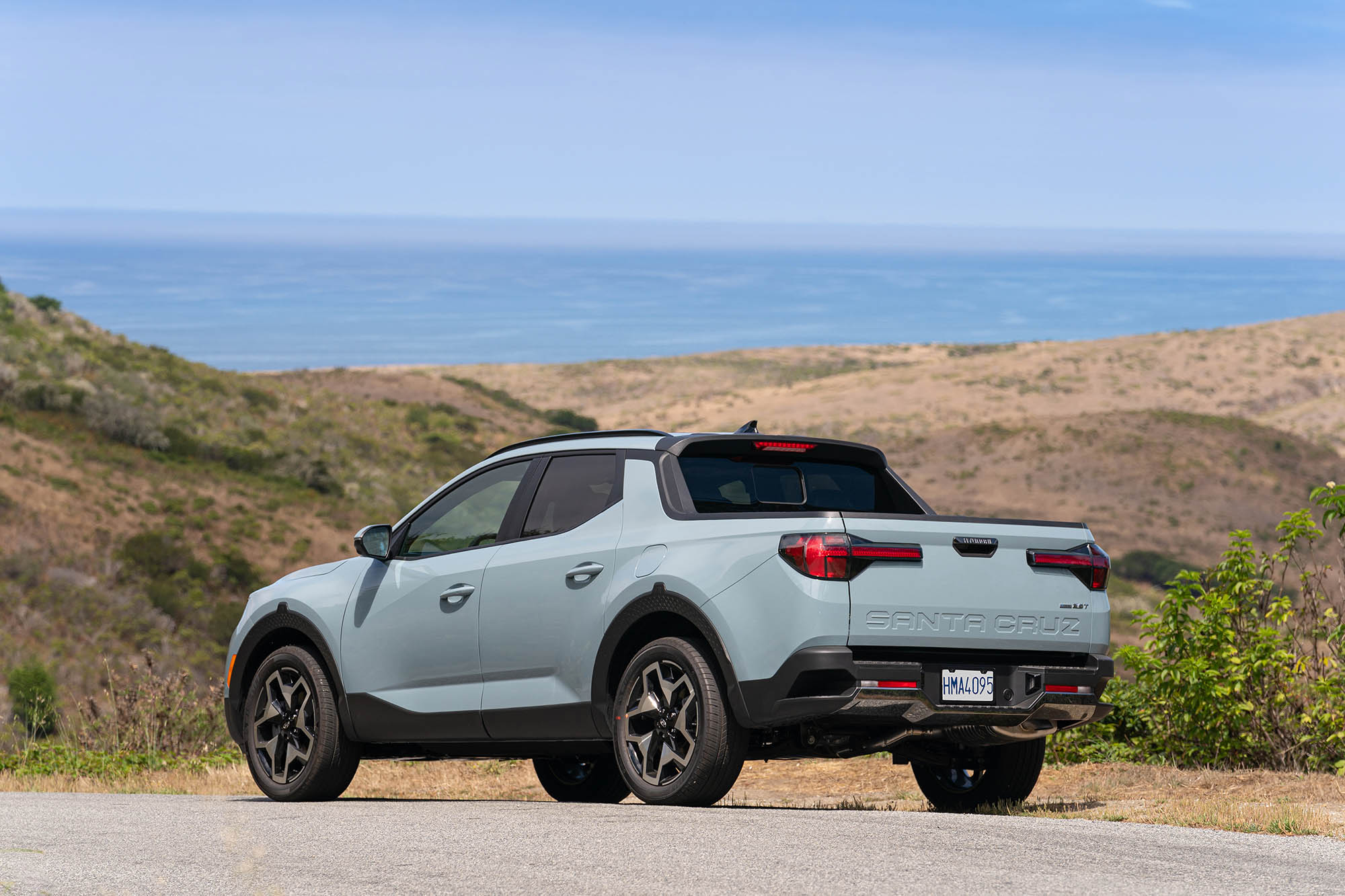Compared: 2024 Honda Ridgeline vs. 2024 Hyundai Santa Cruz
These two pickups employ crossover-derived unibody designs.
 Honda | Hyundai
Honda | Hyundai
Some of us want a truck for occasional use but don't need one every day. That's where vehicles such as the Honda Ridgeline and Hyundai Santa Cruz come in. Both have pickup beds but ride on unibody crossover platforms instead of the body-on-frame design found in most other trucks, allowing them to combine SUV comfort with the capability of a pickup.
 Honda
Honda
The Ridgeline Costs More Than the Santa Cruz
The 2024 Honda Ridgeline has four trim levels, all of which come with standard all-wheel drive (AWD). The base Ridgeline Sport gets a 9.0-inch color touchscreen infotainment interface, an in-bed trunk, and a dual-action tailgate, all at a starting price of around $41,000.
The RTL trim adds a leather interior, blind-spot monitoring, heated front seats, and a power moonroof for about $44,000. The newest addition to the Ridgeline lineup, the Trailsport, costs around $46,000 and adds dirt-road-friendly features, such as an off-road-tuned suspension and light-duty all-terrain tires. A fully loaded Black Edition offers black wheels, a Black Edition leather interior, and red ambient lighting for about $48,000.
 Hyundai
Hyundai
The 2024 Hyundai Santa Cruz comes in five trim levels. AWD is a $1,500 option on the bottom two trims and comes standard on the upper three. The base Santa Cruz SE starts at about $28,000 and includes an 8.0-inch color touchscreen display audio system and 18-inch wheels.
The Santa Cruz Night trim has darkened wheels and accents all around, in addition to a turbocharged engine making 281 horsepower and a starting price of just under $40,000.
The $43,000 Limited is the top-of-the-line Santa Cruz, and it has the same turbocharged engine plus a surround-view camera system, blind-spot cameras, and highway driving assist.
 Hyundai
Hyundai
The Ridgeline Is a Midsize Truck, and the Santa Cruz Is a Compact Truck
The Ridgeline and Santa Cruz both employ unibody construction but compete in different segments. The Santa Cruz is closely related to the Hyundai Tucson, a compact crossover. The Santa Cruz's closest competitor is the Ford Maverick, another compact pickup.
The Ridgeline shares its underpinnings with the Honda Pilot, a midsize three-row family SUV. The Ridgeline competes in the same midsize pickup arena as the Toyota Tacoma.
The Santa Cruz's bed is about 4 feet long, while the Ridgeline's is about 5 feet. While both trucks feature lockable storage compartments under their bed floors, but only the Ridgeline features a dual-action tailgate that opens from the side and in the traditional manner. Most Santa Cruz trims, on the other hand, come with a retractable hard tonneau cover, which you won't find standard on the Ridgeline.
 Honda
Honda
Entry-level Santa Cruz models get an 8.0-inch infotainment screen, while a 10.3-inch unit comes with a fully digital gauge cluster on upper trims. All Ridgeline pickups get a 9.0-inch center screen and a 7.0-inch digital gauge cluster screen paired with an analog speedometer.
The Santa Cruz comes with Hyundai's Highway Driving Assist standard on the top Limited trim, which combines adaptive cruise control and lane centering with automatic speed adjustment based on navigation data. The Ridgeline, however, comes with some form of Honda Sensing driver-assistance features as standard equipment on all trim levels.
Android Auto and Apple CarPlay connectivity are standard on both the Ridgeline and Santa Cruz, though only the Honda offers it wirelessly on all trim levels.
Every Ridgeline can tow up to 5,000 pounds. Santa Cruz models with the base engine can tow 3,500 pounds, while turbocharged models can pull up to 5,000 pounds.
 Hyundai
Hyundai
The Smaller Santa Cruz Is More Fuel Efficient Than the Ridgeline
The 2024 Honda Ridgeline has a 280-hp naturally aspirated 3.5-liter V6 and standard AWD. Sport, RTL, and Black Edition Trims return 18/24/21 mpg in city/highway/combined driving, while Trailsport models are rated at 18/23/20 mpg.
The 2024 Hyundai Santa Cruz offers two engine choices. The base engine is a 191-hp naturally aspirated 2.5-liter four-cylinder. FWD models return 22/26/23 mpg, while AWD examples see 21/25/23. The Santa Cruz's three upper trims get a 281-hp turbocharged 2.5-liter four-cylinder with standard AWD and receive a rating of 19/27/22 mpg.
All vehicle pricing includes MSRP plus destination charges (set at the time of publication), and will be rounded to the nearest thousand.
Written by humans.
Edited by humans.
 Chris O'Neill
Chris O'NeillI am an auto-industry veteran and a current MBA candidate at the University of Utah. After moving to Utah in October 2015 and being fascinated by the unique car culture of the region, I started an Instagram project highlighting the rare and distinctive vehicles I see in the Mountain West region. I enjoy sharing with others my unique perspective and passion for all things automotive. In my free time, when I’m not thinking and writing about cars, I enjoy photography, toying with my 2011 Volkswagen GTI and 1999 Toyota Land Cruiser, and exploring Utah with my girlfriend and two dogs.
Related articles
View more related articles